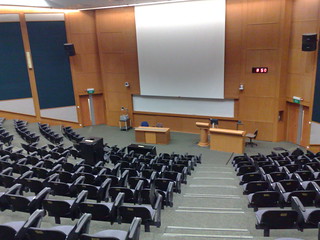
Jennifer is getting ready for a
presentation on a new surgical technique. She's going to be talking
to fellow physicians and she wants them to understand the significant
advantages of the new technique. She wants her slides to be
effective; she's been to too many presentations where speakers sped
through one page of bullet points after another.
What can she do to make her presentation more effective?
A recent study published in Medical
Education can help her design her slides in ways that will help
people better understand and remember her presentation.
The Study
The researchers compared the
effectiveness of traditional bullet point slides to slides develop
using principles of multimedia (Mayer, RE. ,2001, Multimedia
Learning. Cambridge University Press).
Multimedia in this study means
presenting information in different channels (visual and verbal), so
instead of simply using text, the multimedia slides also used
diagrams and pictures to help the audience understand the concepts.
The pictures weren't just decorations, they were intended to help the
learners from mental models of the information.
Medical students got either a lecture
with the multimedia slides or a lecture with the traditional bullet
point slides. Retention and transfer were measured immediately after
the lecture, 1 week later, and 4 weeks later.
The slides designed using principles of
multimedia resulted in significantly better retention and transfer at
all time points.
Issa, N, Mayer, RE, Schuller, M, Wang,
E, Shapiro, MB, and DA DaRosa, (2013) Teaching for understanding inmedical classrooms using multimedia design principles. Medical
Education, 47:388-94.
What it means
We can use what we
know about designing multimedia learning modules to make slide
presentations more effective too. Lectures and slides are widely
used for teaching in medical school and continuing medical education,
increasing their effectiveness could have a big impact.
This study is
particularly interesting because it looked at two different kinds of
learning – retention and transfer – and measured that learning
after a significant amount of time had passed. This gives us a lot
more confidence about the effects of these changes than simply
looking at retention immediately after the lecture.
How can you use this information?
You can revise
your own slides in the same way the researchers did. They first
looked at each slide to determine the key point, or message. Then,
they used multimedia design principles to help each slide present information more effectively.
For instance,
slides that used bulleted text were replaced by slides with diagrams
or pictures. Important principles were highlighted with color and
larger fonts. Graphs had explanatory text moved as close to them as
possible so that people didn't have to spit their attention between a
graph and a caption.